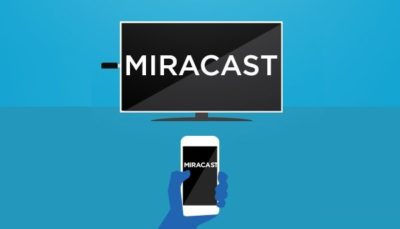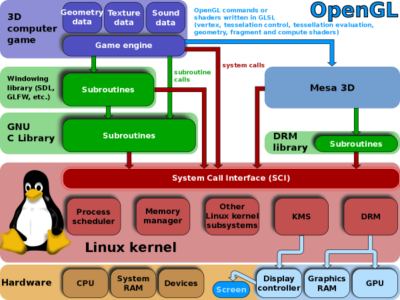In today’s post, we explore why OpenGL applications do not run on a Miracast wireless display in Windows 10. Microsoft has confirmed that this is a problem that applies to the recent versions of Windows 11/10.
What is Miracast

Miracast is a screen-mirroring protocol that lets you broadcast anything from an Android device or recent Intel computer to your TV. Whatever you see on the small screen will appear on the big screen. If everything syncs up properly, there’s almost no lag, making it ideal for watching videos or using productivity software, although it’s not quite reliable enough to run most games.
Phones and tablets with Android 4.2 Jelly Bean or later have access to Miracast, as do most modern Windows PCs with Intel chips.
What is OpenGL

OpenGL (Open Graphics Library) is an application programming interface (API) designed for rendering 2D and 3D graphics. It provides a common set of commands that can be used to manage graphics in different applications and on multiple platforms.
By using OpenGL, a developer can use the same code to render graphics on a Mac, PC, or mobile device. Nearly all modern operating systems and hardware devices support OpenGL, making it an easy choice for graphics development. Additionally, many video cards and integrated GPUs are optimized for OpenGL, allowing them to process OpenGL commands more efficiently than other graphics libraries.
OpenGL apps do not run on Miracast wireless display in Windows 11/10
This problem is known to occur in the following Miracast configurations:
- Windows is set to project in duplicate mode, and the Miracast display is set as the primary display.
- Windows is set to project in extended mode, and the OpenGL application is on the Miracast display.
- Windows is set to project in the second screen-only mode, and the OpenGL application is on the Miracast display.
The main cause of this problem is that the Miracast pipeline in Windows 10 does not yet support OpenGL applications on the Miracast video driver (MiraDisp.dll).
Below is a non-exhaustive list of popular OpenGL applications. Many programs that use OpenGL are games.
Games
- Sauerbraten an open-source 3D FPS (First Person Shooter) and also a game engine.
- Platform games.
- Doom (2016 video game) an FPS.
Photography and video
- Adobe After Effects.
- Adobe Photoshop.
- Adobe Premiere Pro.
- ArtRage.
- Kodi.
Modeling and CAD
- 3D Studio Max.
- Autodesk AutoCAD, 2D/3D CAD.
- Autodesk Maya.
- Cadence Allegro.
- Google SketchUp.
- Modo (software), high-end 3D modeling, animation, rigging, rendering and visual effects package.
- Houdini, modeling, animation, effects, rendering and compositing package developed by Side Effects Software.
- Rhinoceros, NURBS Modeling for Windows.
- SAP2000.
- Blender, 3D CAD, animation and game engine.
- LARSA4D.
- Scilab, Mathematical tool, a clone of MATLAB.
- VirtualMec, 3D CAD for the Meccano construction system.
Visualization and miscellaneous
- Algodoo
- Avogadro
- Google Earth
- InVesalius, a cross-platform software, visualization medical images and reconstruction
- Mari (software), 3D texturing and painting software
- PyMOL, a 3D molecular viewer
- QuteMol, a 3D molecular renderer
- Really Slick Screensavers, 3D Screensavers
- SpaceEngine, Real and procedural 3D planetarium software
- Stellarium, High quality night sky simulator
- Universe Sandbox, an interactive space and gravity simulator
- Vectorworks, a cross-platform Mac/Windows 2D and 3D CAD for architectural & landscape design
- Virtools, a real-time 3D engine
- BALLView
- Celestia, 3D astronomy program
- Enhanced Machine Controller (EMC2), G-code interpreter for CNC machines
- Vizard, a platform for building and rendering enterprise and academic virtual reality applications developed by WorldViz
- VSXu, a cross-platform modular visual programming language engine for OpenGL
Tell us in the comments section below if there are any other OpenGL applications you know of.
Leave a Reply